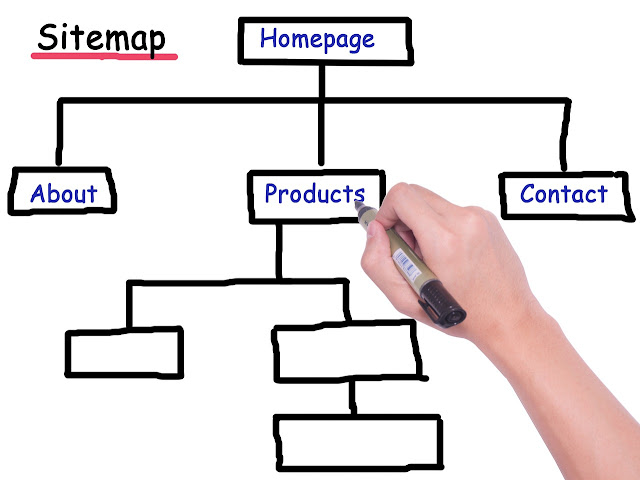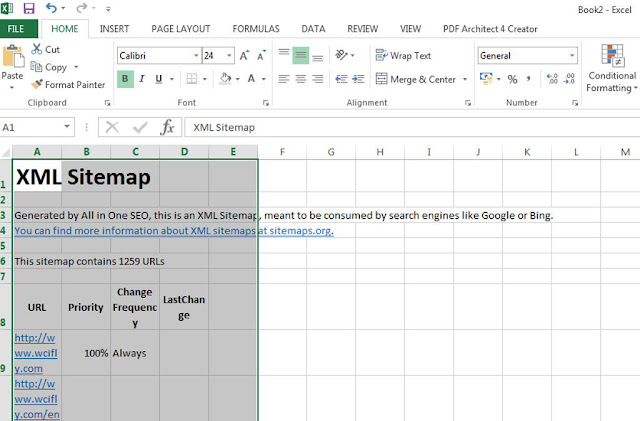SEO Sitemaps Give Websites a Boost
A lot of sites will find an SEO sitemap useful in improving their performance. SEO stands for "Search Engine Optimization", the method that aims to make or revise websites in order that they are often better found by search engines. The objective of SEO campaigns is to possess websites to appear within the top listing or first results page of search engines.
Internet search engines, like Google and A9, maintain a really large database of sites and available files. To do this, they devise a program called an internet crawler, or spider. This software automatically and continuously surfs and hunts content within the Web. Pages that the spider finds are retrieved and indexed consistent with text content, giving more weight to titles and paragraph headers. Spiders never stop navigating the online from page to page, to index the relevant content of the web. Besides watching the text of titles and headers, some programs are ready to identify default tags and keep a library of those page keywords or key phrases in the index.
When a user connects to the web types a question, which is automatically interpreted as keywords, the program scans the saved index and creates an inventory of sites that is most appropriate to what the user is checking out.
SEO will use all the combined techniques of keyword analysis, smart code, good content literature, link popularity study and website organization to put the topic website as high as possible within the list of search leads to search engines. Web pages displayed on the highest of results pages are assumed to urge the foremost attention, and thus, an opportunity for earnings for web businesses and pages with sponsor links.
Search engines usually return an inventory of results ranking pages consistent with the number of websites linked to them. Results are often classified as organic, or sponsored links. Sponsored links are shown prominently because their creators or agents paid the program. Sponsored links are the most source of income for search engines. "Organic" search results are the lists of actual results from the engines index and are directly associated with the keyword typed within the request. One of the simpler techniques of SEO is that the creation of a well-organized site map during a website. Since the site's main page and other content are directly linked to a site map, spiders can more easily move through the web site, identify the key words Of the search engine 's content, and index these. The SEO sitemap helps the creator or administrator of the website.
Site maps are usually pages filled with links. These are shown as tables or lists, although lists are generally simpler. Writing code for SEO sitemaps is extremely easy and straightforward to format and maintain. These are ideally basic HTML pages scattered within the Meta description with default tags, logical titles, and keywords. Areas of introduction may contain more of the keywords. For each directory, the site should have one main heading.
A simple list layout helps reduce unnecessary tags which may "hide" your keywords. Some spiders give more weight to the subsequent than text within the normal body of the webpage: heading text, content within link elements, text nearer the highest of The page, and the text of a link written. Therefore, writing the keywords and links in these areas could somehow move up the online page's ranking. This also holds true for SEO sitemaps.
Web sites should be designed consistently, so navigation models should follow the flow of the location map. Therefore, the primary section within the site map should be the primary link within the navigation bar.
In an SEO Sitemap and most pages, the headings contain title attributes where more key phrases within the site map are often added. Keywords are generally well chosen and written within the body of a webpage. However, in an SEO site map with little text, keywords should be added to the maximum amount as possible. As much as possible, web links should follow website titles and must undergo SEO during coding. Care must be exercised to not cram the page with keywords and links, or the page is going to be interpreted as blatant spamming and not receive any traffic in the least.
There are no thanks to guaranteeing that an internet site is going to be shown within the topmost ranking of "organic" search results for an extended period of your time. However, smart and responsible SEO sitemap techniques are often wont to place the web site high within the search position. Regular monitoring and adjustment of the SEO Sitemap and search results would make sure that an internet site is kept near the highest-ranking and receiving many web user traffic.
A lot of sites will find an SEO sitemap useful in improving their performance. SEO stands for "Search Engine Optimization", the method that aims to make or revise websites in order that they are often better found by search engines. The objective of SEO campaigns is to possess websites to appear within the top listing or first results page of search engines.
Internet search engines, like Google and A9, maintain a really large database of sites and available files. To do this, they devise a program called an internet crawler, or spider. This software automatically and continuously surfs and hunts content within the Web. Pages that the spider finds are retrieved and indexed consistent with text content, giving more weight to titles and paragraph headers. Spiders never stop navigating the online from page to page, to index the relevant content of the web. Besides watching the text of titles and headers, some programs are ready to identify default tags and keep a library of those page keywords or key phrases in the index.
When a user connects to the web types a question, which is automatically interpreted as keywords, the program scans the saved index and creates an inventory of sites that is most appropriate to what the user is checking out.
SEO will use all the combined techniques of keyword analysis, smart code, good content literature, link popularity study and website organization to put the topic website as high as possible within the list of search leads to search engines. Web pages displayed on the highest of results pages are assumed to urge the foremost attention, and thus, an opportunity for earnings for web businesses and pages with sponsor links.
Search engines usually return an inventory of results ranking pages consistent with the number of websites linked to them. Results are often classified as organic, or sponsored links. Sponsored links are shown prominently because their creators or agents paid the program. Sponsored links are the most source of income for search engines. "Organic" search results are the lists of actual results from the engines index and are directly associated with the keyword typed within the request. One of the simpler techniques of SEO is that the creation of a well-organized site map during a website. Since the site's main page and other content are directly linked to a site map, spiders can more easily move through the web site, identify the key words Of the search engine 's content, and index these. The SEO sitemap helps the creator or administrator of the website.
Site maps are usually pages filled with links. These are shown as tables or lists, although lists are generally simpler. Writing code for SEO sitemaps is extremely easy and straightforward to format and maintain. These are ideally basic HTML pages scattered within the Meta description with default tags, logical titles, and keywords. Areas of introduction may contain more of the keywords. For each directory, the site should have one main heading.
A simple list layout helps reduce unnecessary tags which may "hide" your keywords. Some spiders give more weight to the subsequent than text within the normal body of the webpage: heading text, content within link elements, text nearer the highest of The page, and the text of a link written. Therefore, writing the keywords and links in these areas could somehow move up the online page's ranking. This also holds true for SEO sitemaps.
Web sites should be designed consistently, so navigation models should follow the flow of the location map. Therefore, the primary section within the site map should be the primary link within the navigation bar.
In an SEO Sitemap and most pages, the headings contain title attributes where more key phrases within the site map are often added. Keywords are generally well chosen and written within the body of a webpage. However, in an SEO site map with little text, keywords should be added to the maximum amount as possible. As much as possible, web links should follow website titles and must undergo SEO during coding. Care must be exercised to not cram the page with keywords and links, or the page is going to be interpreted as blatant spamming and not receive any traffic in the least.
There are no thanks to guaranteeing that an internet site is going to be shown within the topmost ranking of "organic" search results for an extended period of your time. However, smart and responsible SEO sitemap techniques are often wont to place the web site high within the search position. Regular monitoring and adjustment of the SEO Sitemap and search results would make sure that an internet site is kept near the highest-ranking and receiving many web user traffic.








.jpg)

No comments:
Post a Comment
Please Dont Enter Any Spam Link in The Comment Box